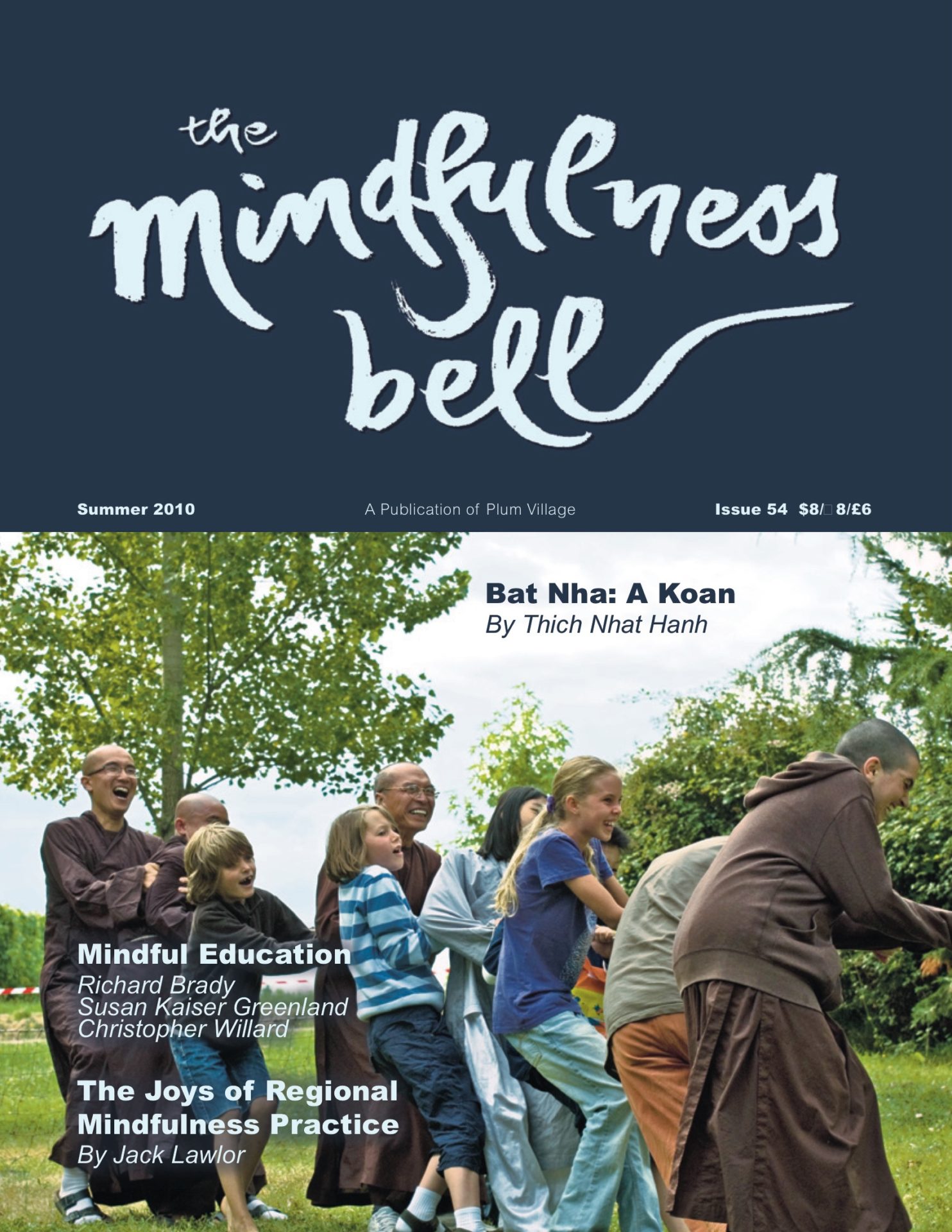By Richard Brady in June 2010
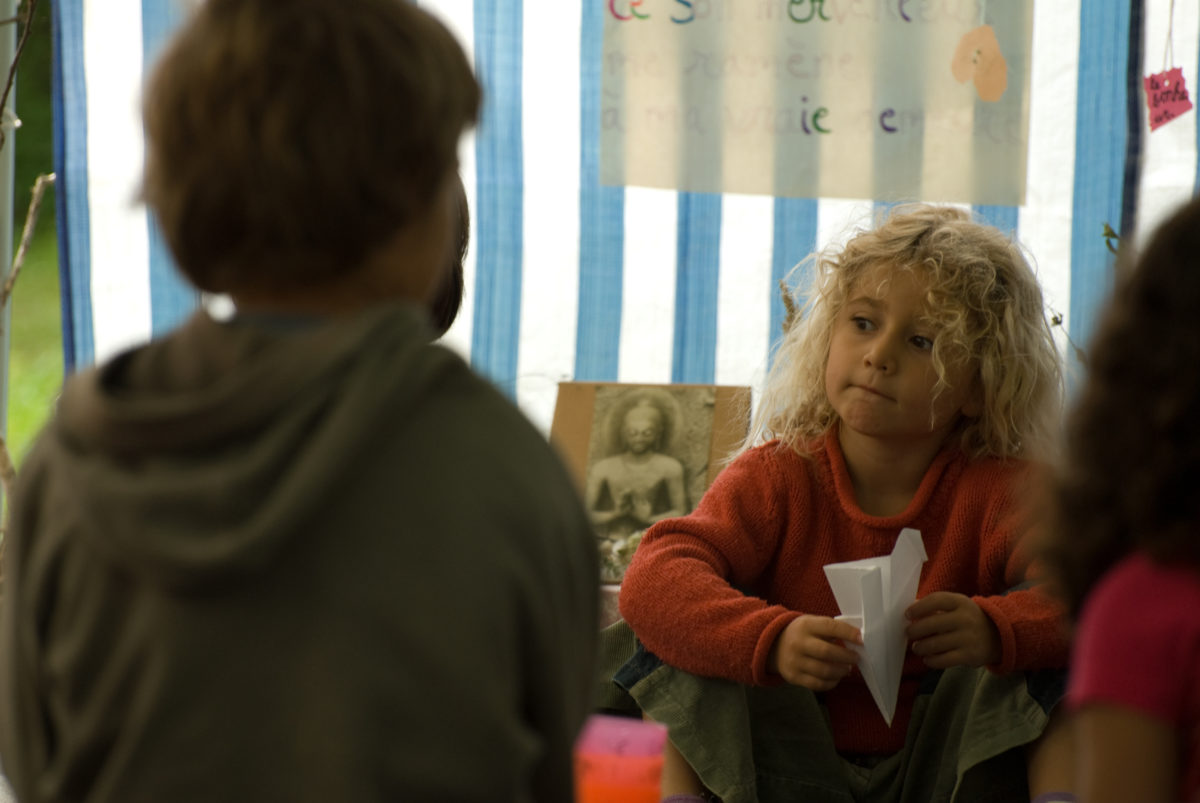
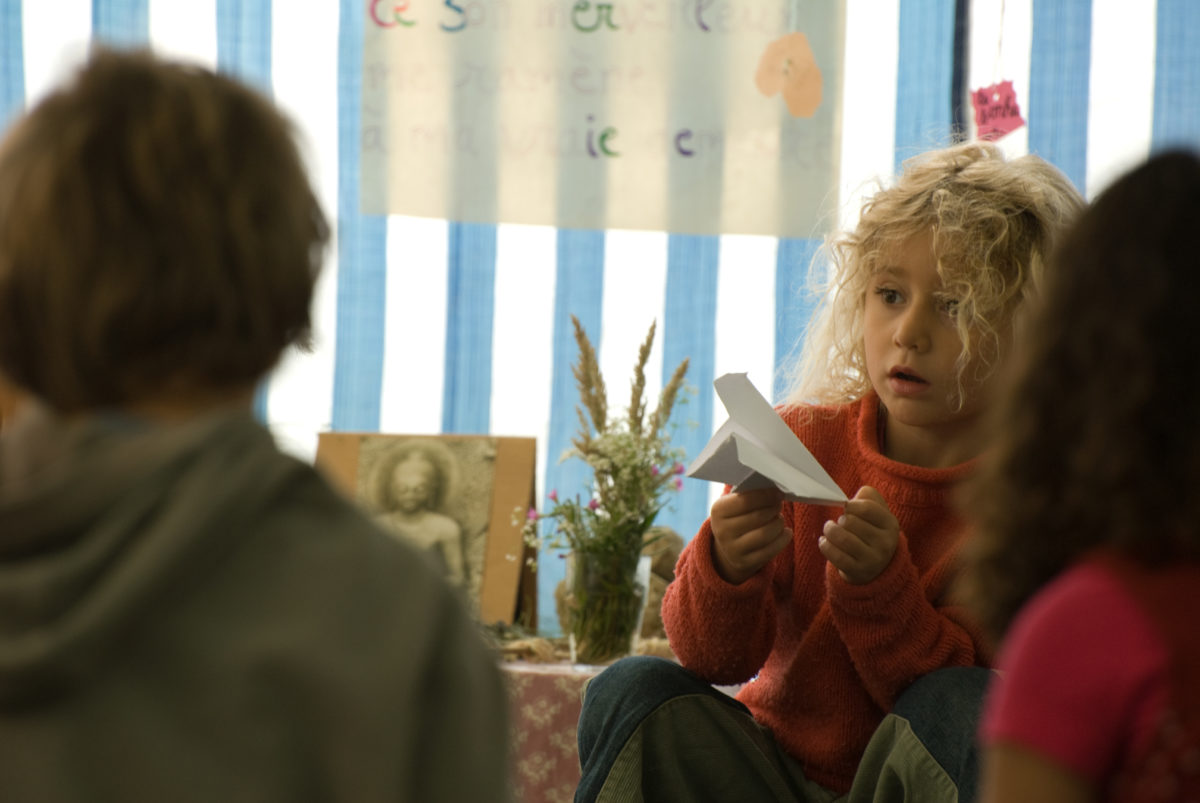
“Sentient beings are numberless. I vow to awaken them.” This is the first of the four great bodhisattva vows of Mahayana Buddhism. Whether or not we aspire to be bodhisattvas, once we embark on the Buddhist path we realize that we are practicing not only for ourselves but for the world.
By Richard Brady in June 2010


“Sentient beings are numberless. I vow to awaken them.” This is the first of the four great bodhisattva vows of Mahayana Buddhism. Whether or not we aspire to be bodhisattvas, once we embark on the Buddhist path we realize that we are practicing not only for ourselves but for the world. As an educator working with young people, I’ve been particularly aware of the tremendous opportunity I’ve been given to help others awaken.
My involvement with Thay and with mindfulness in education began almost simultaneously. It was 1987, and I was working as a high school mathematics teacher. My school community was experiencing an unusual amount of stress following four attempted suicides. One day that winter I began reading The Miracle of Mindfulness and saw immediately how useful its teachings could be for my very busy students. If they incorporated mindfulness into their lives, they would be able to cope with life’s inevitable challenges. The very next day I began to share short readings from the book with my classes, following our opening silence. Starting from the initial lesson about how to have unlimited time for oneself, students appreciated these readings as supplements to their mathematical learning. When I finished reading that book, the students asked for another, and I read them The Sun My Heart.
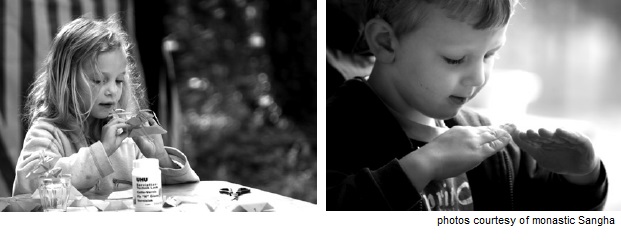
Thay’s teachings sounded wonderful to me. However, the way of living he portrayed in these books felt so different from my own. It seemed to me that I could not get there from where I was. As fate would have it, near the end of that school year when the seniors returned from three weeks of working off-campus on senior projects, I noticed a presentation by one of the seniors—a boy named Chris—about his project at the Zen Center of Washington, DC. “Here is someone with meditation experience, someone I can learn from,” I thought. Chris began his presentation by telling us that a classmate and he had been reading Eastern religion and philosophy since seventh grade. Recently, he had discovered the local Zen center and “decided to put my body where my mind was.” I felt Chris was talking directly to me.
He spoke of his experience with tremendous enthusiasm. He showed pictures and recounted some dramatic experiences he’d had during the three-day intensive meditation retreat he attended as part of his project. At the conclusion of his talk, another student asked Chris whether his life was different now in any way besides the amount of time he spent sitting on cushions. Chris responded by saying that meditation had many effects on him. “However,” he added, “most are so subtle I can’t put them into words.” After a pause, he went on, “I can tell you that I am less angry.” Chris’s presentation, especially this last statement, was very moving to me. I thanked him and made a promise to him and to myself that I would try to meditate.
One year later I met Thay at Omega Institute in New York. There I was introduced to the custom of stopping at the sound of a bell and giving my full attention to the present moment. I came home with a small bell and brought it to my math classes. I sounded it at the beginning of class, and from time to time during the class period, to help the students stop and center themselves. Time seemed to stop during those brief moments. The students responded to the bell with respect. When I came home, I also began a daily sitting practice and helped found the Washington Mindfulness Community.
As my meditation practice matured, my life started to slow down. I became more relaxed. Mindfulness practice was helping me handle my emotions in a healthy way, improving my awareness, and increasing my sense of well-being. I now had the confidence I needed to teach it to students. In the health component of our Freshman Studies course, I began teaching meditation to help our ninth-graders create more space in their lives and reduce stress. Then, since math tests were a source of stress for so many students, I started to offer guided meditations before each test and quiz. First I asked students to get in touch with their emotions—excitement, nervousness, even fear—and then to observe these emotions without getting carried away by them. Next, I asked them to visualize a time when they had felt good about some mathematical accomplishment, perhaps learning to count or solving a particularly challenging algebra problem. After a couple of minutes, students were ready to begin work with a positive focus.
I was the only teacher in my school sharing mindfulness practices with students, so I was most gratified when Thay extended a special invitation to educators to attend his two U.S. retreats in 2001. During these retreats, educators had opportunities to meet in interest groups and share thoughts about promoting mindfulness in their educational institutions. After the retreats several of us formed the Mindfulness in Education Network (MiEN) as a continuation of these groups. MiEN’s first endeavor was the creation of a listserv, which started with 86 people. It now has 550 participants worldwide, ranging from kindergarten teachers to university professors and adult educators. Participants use the listserv to share their successes, challenges, and advice. More recently, the MiEN website (www.mindfuled.org) was developed. It includes many resources on mindfulness in education and instructions on how to join the listserv.
Wanting to expand the role of mindfulness in my mathematics teaching, I attended The Center for Contemplative Mind in Society’s fi weeklong summer workshop on contemplative curriculum development in 2005. My plan was to add a contemplative component to my tenth-grade honors geometry course. The workshop presenters and the other participants, thirty-five professors from the U.S. and Canada, were inspiring. I returned home with new ideas about contemplative reading and journaling and, more importantly, a profound sense of trust in the whole endeavor. I knew I still had a lot to learn and that I would make mistakes. I also saw that it would take time for many of my students to reap the full benefits of contemplative methods of learning. I was clear about their value and would try to communicate that clarity to my students. I would use these methods myself and grow as a learner alongside them. The course featured five minutes of contemplative practice (journal writing, meditation, or yoga) at the beginning of each class. I’ve described it in the paper Learning to Stop, Stopping to Learn, which can be found on my website, www.mindingyourlife.net.
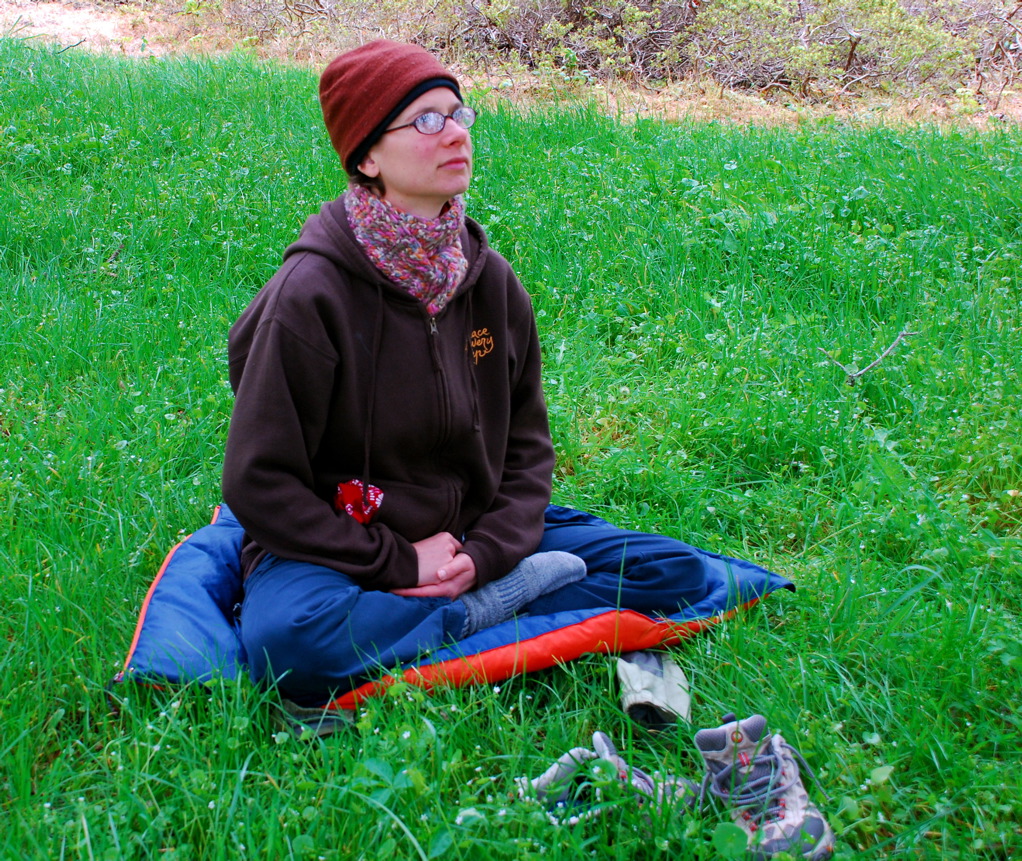
In 2007 I retired from high school math teaching, wanting to work full time promoting mindfulness in education. During the past three years, I’ve offered mindfulness programs to educators and students, written articles, co-edited a book (Tuning In: Mindfulness in Teaching and Learning), and coordinated the first three MiEN national conferences. The conferences bring together several hundred participants, including early childhood educators, professors, counselors, and yoga teachers. They come to hear leaders in their fields describe the latest results in mindfulness research, university courses based on mindfulness, and creative approaches for sharing mindfulness with K-12 students. And they come to network with others who share a common passion. I leave each conference feeling informed, energized, and supported by the work of many others.
It has been my privilege to be involved with other organizations that focus on mindfulness in education. These include The Center for Contemplative Mind in Society, which has supported contemplative pedagogy in higher education since the early 1990s, and its recently formed Association for Contemplative Mind in Higher Education. It also includes Inner Kids, and the Association for Mindfulness in Education, which focus on K-12 education. Links to these and other organizations can be found on the MiEN website. My greatest joy remains finding skillful ways to invite educators and students to practice, whether through including poems and short teaching stories in my writings, or offering short practice opportunities during my presentations.
Those of us who share mindfulness with young people often ask ourselves, “At the end of the day, has it made a difference?” We believe it has, but controlled research studies aside, do we really know? Four years ago, at my school’s annual holiday alumni reception, I had a memorable conversation with Tom, a former student whom I had last seen when he graduated in 1989. Tom shared something of his career path, ending with his current job as a compliance lawyer for the World Bank. When he asked me what I was up to, I handed him my Minding Your Life business card. “Mindfulness Education,” he read. “That’s like the story you read to us about washing the dishes.” (He was referring to Thay’s story about being present to washing the dishes from The Miracle of Mindfulness.) I was surprised Tom remembered the story eighteen years later. It turned out that in the interim he had also read several books on mindfulness.
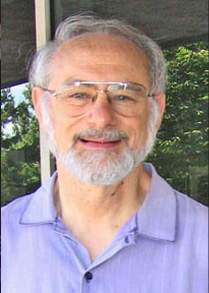
Five weeks later I discovered that the Center for Contemplative Mind in Society would be holding a meditation retreat for law professionals at Spirit Rock Meditation Center in the spring. I sent Tom an email suggesting he check it out. I also mentioned that I had been moved by his recollection of the dishwashing story. Tom replied immediately, thanking me for the recommendation and concluding, “And if it means something to you, I’d be very surprised if there are any of us who were in that BC Calculus class back in ’88–’89 who don’t remember the introduction you gave us then to Thich Nhat Hanh.”


